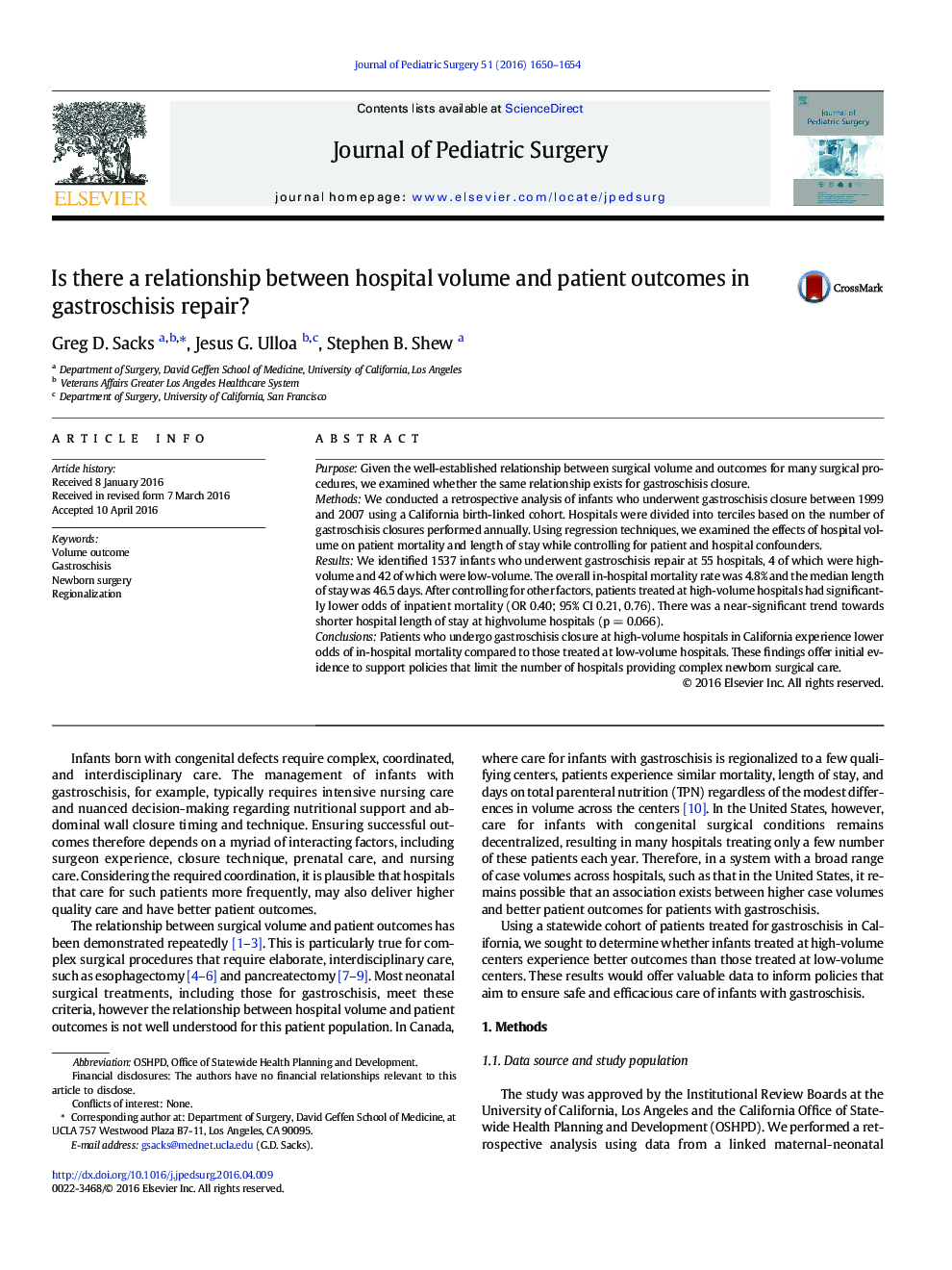| Article ID | Journal | Published Year | Pages | File Type |
|---|---|---|---|---|
| 4154674 | Journal of Pediatric Surgery | 2016 | 5 Pages |
PurposeGiven the well-established relationship between surgical volume and outcomes for many surgical procedures, we examined whether the same relationship exists for gastroschisis closure.MethodsWe conducted a retrospective analysis of infants who underwent gastroschisis closure between 1999 and 2007 using a California birth-linked cohort. Hospitals were divided into terciles based on the number of gastroschisis closures performed annually. Using regression techniques, we examined the effects of hospital volume on patient mortality and length of stay while controlling for patient and hospital confounders.ResultsWe identified 1537 infants who underwent gastroschisis repair at 55 hospitals, 4 of which were high-volume and 42 of which were low-volume. The overall in-hospital mortality rate was 4.8% and the median length of stay was 46.5 days. After controlling for other factors, patients treated at high-volume hospitals had significantly lower odds of inpatient mortality (OR 0.40; 95% CI 0.21, 0.76). There was a near-significant trend towards shorter hospital length of stay at highvolume hospitals (p = 0.066).ConclusionsPatients who undergo gastroschisis closure at high-volume hospitals in California experience lower odds of in-hospital mortality compared to those treated at low-volume hospitals. These findings offer initial evidence to support policies that limit the number of hospitals providing complex newborn surgical care.
